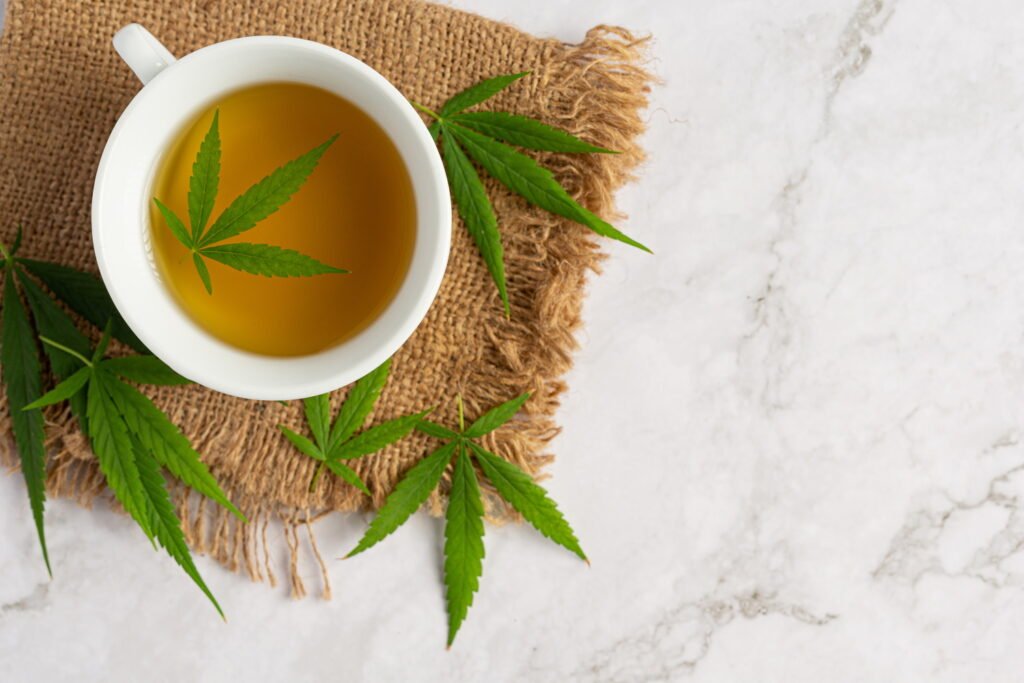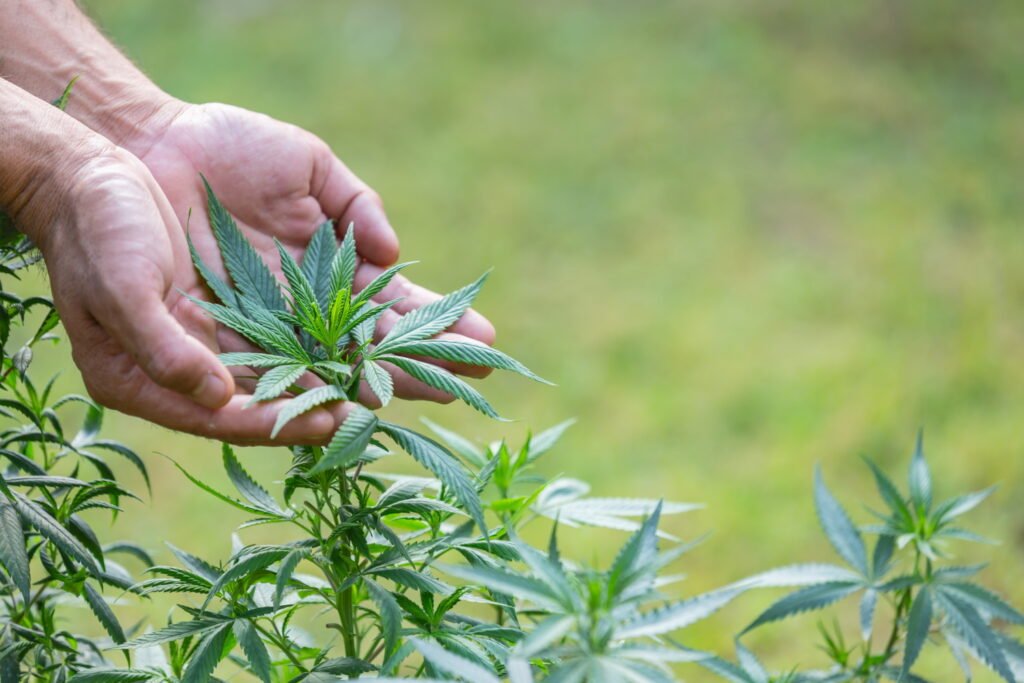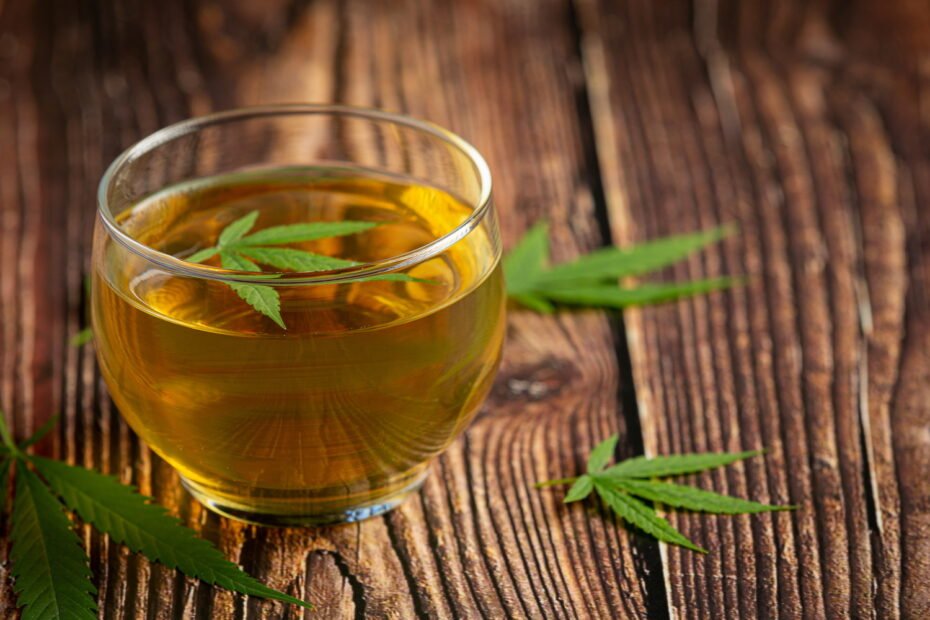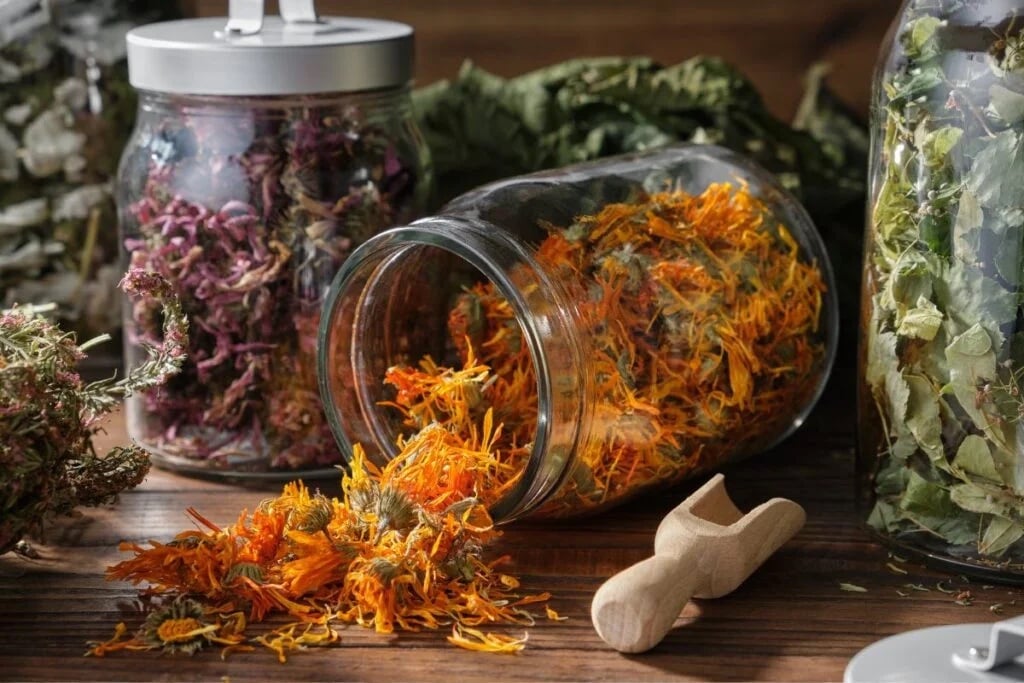Cannabis tea is an increasingly popular beverage. More and more people are becoming interested in cannabis and discovering the health benefits of cannabis tea. Let’s get to know cannabis and find out how to make cannabis tea.
Cannabis is a genus of Magnoliophyta in the Cannabaceae family. There are three species of cannabis: the sativa (Cannabis sativa), the indica (Cannabis indica), and the trash can (Cannabis ruderalis). Cannabis sativa is one of the oldest cultivar plants. Their seeds and the remains of hemp cords have been found in the Middle Neolithic settlements of some populations (3rd millennium BC or 2nd half of the 2nd millennium BC).
Interestingly, cannabis was divided into two sexes: the female plants were called grains, and the male plants were called dandelions. The male plants are smaller than the female plants, grow faster, and flower earlier. The plant is medicinal, nutritious, fast-growing, and resistant to weeds and pests. Not all countries have legalized cannabis cultivation, and somewhere it is still subject to state control.
Benefits of Cannabis Tea
Humans for millennia have known cannabis tea for its healing properties. Science has already proven that cannabis has many benefits, including in the cannabis tea it produces. You can make cannabis tea from hemp fibers, so it is non-hallucinating, has no unwanted side effects, and is a completely safe product that anyone can drink, day or night.
Benefits of Cannabis Tea for Health
- Strengthens the immune system and other bodily functions. It contains the powerful antioxidant vitamin C, essential for the absorption of calcium, magnesium, and iron and the proper functioning of the immune system.
- The terpenes (volatile organic compounds) in cannabis relax the central nervous system, which is particularly important in the fight against chronic fatigue, sleep disturbances, and depression. Cannabis tea is soothing without causing drowsiness but rather pleasantly relaxing, relieving stress and tension, making it suitable for those working in a stressful environment and wanting to improve their sleep quality.
- It normalizes the liver, stomach, spleen, and pancreas; normalizes the intestinal microflora; gently lowers blood pressure; normalizes the cardiovascular and nervous systems; and contains vitamin B3.
- Omega-3 essential fatty acids help prevent the development of cardiovascular disease.
- The phytocannabinoids in cannabis have anti-rheumatic, antipyretic, anti-vomiting, and anti-inflammatory properties.
- It improves the functioning of the digestive tract.
- Supports hormonal balance by containing gamma-linoleic acid.
- Detoxifies the body and promotes cell regeneration, resulting in a more beautiful complexion.
- Relieves chronic pain, toothache, and bruises.
The Difference Between Youth and Mature Cannabis Tea
You can make drinks from either young or mature cannabis and will have slightly different properties.
Young cannabis tea is made from an immature cannabis plant and is used as a vitamin and chlorophyll supplement. You can buy youthful cannabis tea in sachets or loose—just dried leaves. Young cannabis tea increases the red blood cell count, detoxifies the body, prevents kidney stones, promotes cell renewal, improves digestion, stimulates the immune system, helps with insomnia, and takes care of hormonal balance.
Mature cannabis tea uses the flowers and leaves of the older cannabis plant. They contain much higher levels of cannabinoids (CBD), vitamins, and chlorophyll than young cannabis tea. Aged cannabis tea improves appetite, digestive function, and heart health and relieves symptoms of nausea, chronic pain, respiratory ailments, pancreatitis, seizures, and Alzheimer’s symptoms.
Cannabis and The Endocannabinoid System
The endocannabinoid system (ECS) was only introduced in the 1990s and is a relatively new, meaningful field. It performs essential functions for all of us. Initial studies on the ECS suggest a possible link to various immunity maintenance functions: sleep quality, hunger, and memory regulation. The most researched area is the extensive interaction of the endocannabinoid system with nervous system activity.
The cannabinoids found in cannabis (CBD, CBDA, CBC, etc.) help facilitate the absorption of natural cannabinoids and keep them intact for longer. CBD plays a role in the body’s balanced conducting process with other substances vital to humans.
Cannabis Tea for Pregnancy, Breastfeeding, and Babies
Cannabis-active substances penetrate the placental barrier and pass into breast milk, thus affecting the development of the baby. However, there is not enough research in this area, so there is no recommendation to consume tea during pregnancy, breastfeeding, or infancy or that you consult your GP.

How to Make Cannabis Tea
The tea must be appropriately prepared to bring out the full benefits of cannabis tea.
- Place 1 teaspoon of cannabis flowers, leaves, or a mixture of the two in a cup. The more flowers or leaves, the more intense the taste.
- Bring the water to a boil and let it simmer for 1-2 minutes until it is slightly cold. The water should not be boiling.
- Steep the cannabis tea flowers or leaves and leave for 15 minutes until the tea has attracted and released all its beneficial properties.
- Adding a knob of butter, a drizzle of cream, or a little honey to the tea will not only enrich the usual taste but will also enhance the absorption of the tea’s beneficial properties.
Hemp Tea with Milk
- Mix 1 teaspoon of grated cannabis, 0.5 grams of butter, 1 cup of full-fat milk, and 1 teaspoon of vanilla extract. Vegans can use hemp seed drinks instead of milk.
- You can use a blender or food processor to mix the ingredients quickly into a smooth mass.
- If you have time, keep this shaken mixture cool to allow the active ingredients to bind together.
- Pour the mixture into 250 ml. Boil water and cook, stirring, for 10–15 minutes. If the tea starts to thicken, add a little more water.
- After removing the tea from the heat, let it cool for 3–5 minutes and strain through a fine sieve.
- You can add milk, cream or sugar, honey, and spices.

CBD Tea
People can buy CBD tea in tea bags. But you can also make it at home by adding a few drops of CBD oil to your regular tea. However, one important thing to know is that CBD oil does not dissolve in water, so you need to add fat to the tea, such as butter or coconut oil, to help the body absorb the CBD. CBD has very similar benefits for the body to those of mature cannabis teas, including:
- eases migraine symptoms;
- relieves pain;
- improves bodily functions;
- helps with insomnia, anxiety, and nervous exhaustion.
Please note: hemp oil is freshly pressed, while CBD is an extracted CO2 extract mixed with vegetable oil.
Hemp Root Tea
Cannabis root tea takes longer to make than cannabis flower or leaf tea. First, you need to thoroughly clean and dry the cannabis roots. However, you can also buy cannabis root tea in shops. Prepare hemp root tea using the same method as hemp flower or leaf tea and has the same properties as other types of hemp tea.
Flavor a bitter cannabis root tea with cinnamon, anise, cardamom, or other spices to give it a specific taste.
This tea has been used as a medicine since ancient times. The cannabis root, like hemp itself, contains beneficial chemical compounds that help the human body recover.
Hemp and Peppermint Tea
- Add half a teaspoon of hemp flowers or leaves and half a teaspoon of peppermint to a cup. You can adjust the proportions of the herbs slightly to taste; add more of one and less of the other. The strength of the tea will also depend on the amount of herbs.
- So pour hot water over the herbs and leave them to steep for at least 5 minutes. The longer the tea is left to steep, the more intense the flavor.
- The only condition for making tea with cannabis is to add a little fat, such as coconut oil, cream, milk, etc., as the beneficial cannabinoids are fat-soluble and are only absorbed better by the body when made this way.
- You can brew the teaspoons several times.

Fermented Cannabis Leaf Tea
Fermentation is a way of preparing hemp tea. Fermented tea has a more pronounced flavor and aroma. Each producer uses its own method, so don’t be surprised if you find information elsewhere about teas that are fermented differently.
The traditional way of fermenting cannabis tea:
- Collect the cannabis leaves, spread them on a large patio, and let the beetles loose.
- Squeeze a few cannabis leaves in the palm of your hand, twist them to extract some juice, and put them in a jar. Try to squeeze the twisted leaves as tightly as possible, leaving no air gaps.
- Once the jar is full, screw it up and leave it in the warmest place (avoid direct sunlight) for at least a day. It is ideal if the air temperature in the warm place is at least 22–24 °C. Stop the fermentation process at the earliest after one day and the latest after three days.
- Remove the cannabis leaves from the jar, cut them to the desired size, and dry them in a food dehydrator or preheated oven. The optimum drying temperature is 50–55 °C.
- Drink the fermented tea a few months after you brew it, and store it in tightly sealed jars to preserve its aroma.
What Works for One May Not Be Appropriate for Another
In 2018, Danish researchers found that patients taking warfarin should refrain from cannabis tea because cannabis metabolites can reduce blood clotting. Some articles suggest that cannabis may accentuate the course of bipolar disorder without predisposing to the development of bipolar disorder. If you are allergic to other plants or medicinal herbs, you may likely be allergic to cannabis tea. Allergies may be manifested by rashes, a runny nose, red eyes, and, less commonly, anaphylactic reactions.
Associative photos © Freepik.

